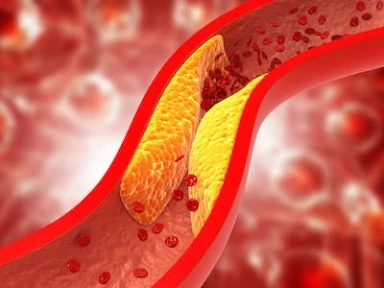Meta Analysis of apoB Lowering and CV Risk Reduction Among Different LLTs
Galimberti F, et al. Poster presented at the 91st European Atherosclerosis Society congress (EAS) 2023.
Key Takeaway
This meta-analysis included 254,828 participants from 20 RCTs Reported the association of 6 different classes (statins, ezetimibe, PCSK9-inhibitors, CETP-inhibitors, fibrates, and niacin) of LLT with apoB levels and major CV events and showed that:
- All 6 classes of LLT were associated with similar reduction in risk of major CV events for the same magnitude and duration of apoB lowering
- For 30 mg/dL absolute reduction in plasma apoB levels, 6 classes of LLTs were associated with a consistent reduction in major CV events:
- 10%, 15%, 19% and 20% proportional reduction after 1, 2, 3, and 4 or 5 years of therapy, respectively
- Regardless of changes in other lipids, the therapeutic benefit of LLT was determined by changes in plasma apoB levels
Why This Matters
- LDL-C reduction therapies (statins, ezetimibe, and PCSK9 inhibitors) have demonstrated consistent reduction of major CV events in several RCTs
- However, therapies that do not involve up-regulation of LDL-receptor pathway* or that lower triglycerides† did not show a consistent reduction in risk of CV events
- Trapping of apoB molecule within the artery wall can cause progression of atherosclerotic plaque
- This study compared the association between the proportional reduction in major CV events and different classes of LLT for the same magnitude and duration of apoB lowering
Key Highlights
Methods:
- Meta-analysis of RCTs evaluating 6 different classes of LLTs
- Databases: MEDLINE and EMBASE were searched from inception to November 2022
Inclusion criteria:
- Placebo-controlled, double-blind RCTs reporting adjudicated clinical CV outcomes and enrolled ≥1,000 participants with a median follow-up duration of ≥1 year
- Reported absolute achieved differences in plasma apoB levels between treatment and control groups
- Provided cumulative event curves figure for the treatment and control groups that included number of participants remaining at risk at beginning of each year of follow-up
Analysis:
- Association between 30 mg/dL reduction in plasma apoB levels and risk of major CV events across classes of LLTs
- Summary estimates of the effect for an individual class of therapy were combined in an inverse variance-weighted random-effects meta-analysis iteratively after each year of follow-up
- Heterogeneity of effect among different LLT classes was assessed using the I2 statistics
Results:
254,828 participants from 20 trials with major CV events (30,175) were included
- Mean age = 63 years
- Females = 26%
Association of Reduction in Plasma Apo-b Levels with Llt and Reduction in Major Cv Events
For each 30 mg/dL absolute reduction in plasma apoB levels, the 6 classes of LLT (statins, ezetimibe, PCSK9-inhibitors, CETP-inhibitors, fibrates, and niacin) were associated with a consistent reduction in major CV events after therapy
| Duration of therapy | Proportional reduction in major CV events for each 30 mg/dL absolute reduction in plasma apoB levels |
HR (95% CI) |
| After 1 year | 10% | 0.90 (0.86–0.94) |
| After 2 years | 15% | 0.85 (0.82–0.88) |
| After 3 years | 19% | 0.81 (0.78–0.85) |
| After 4 or 5 years | 20% | 0.80 (0.77–0.83) |
(I2 = 6.9%; P = 0.364)
| Therapy | HR (95% CI) | Heterogeneity; HR (95% CI) |
| 1 year | I2 = 0.00%, H2 = 1.00; 0.90 (0.86–0.94) |
|
| Statins | 0.89 (0.82–0.96) | |
| PCSK9mAB | 0.89 (0.84–0.96) | |
| Ezetimibe | 0.90 (0.77–1.05) | |
| CETP - Inhibitiors | 0.97 (0.77–1.24) | |
| Fibrates | 0.87 (0.53–1.43) | |
| Niacin | 0.99 (0.68–1.43) | |
| 2 years | I2 = 0.00%, H2 = 1.00; 0.85 (0.82–0.88) |
|
| Statins | 0.83 (0.78–0.88) | |
| PCSK9mAB | 0.86 (0.81–0.90) | |
| Ezetimibe | 0.85 (0.75–0.97) | |
| CETP - Inhibitiors | 0.93 (0.77–1.12) | |
| Fibrates | 0.93 (0.66–1.31) | |
| Niacin | 0.89 (0.68–1.17) | |
| 3 years | I2 = 0.00%, H2 = 1.00; 0.81 (0.78–0.85) |
|
| Statins | 0.80 (0.76–0.84) | |
| Ezetimibe | 0.83 (0.74–0.92) | |
| CETP - Inhibitiors | 0.87 (0.74–1.02) | |
| Fibrates | 0.78 (0.58–1.04) | |
| Niacin | 0.86 (0.68–1.09) | |
| 4 years | I2 = 0.00%, H2 = 1.00; 0.80 (0.77–0.83) | |
| Statins | 0.80 (0.76–0.83) | |
| Ezetimibe | 0.81 (0.73–0.90) | |
| CEPT - Inhibitors | 0.81 (0.70–0.94) | |
| Fibrates | 0.77 (0.59–0.99) | |
| Niacin | 0.84 (0.68–1.05) | |
| 5 years | I2 = 0.00%, H2 = 1.00; 0.80 (0.77–0.83) |
|
| Statins | 0.80 (0.77–0.83) | |
| Ezetimibe | 0.80 (0.73–0.88) | |
| Fibrates | 0.81 (0.64–1.03) | |
ABBREVIATIONS:
CETP, cholesteryl ester transfer protein; CI, confidence interval; HR, hazard ratio; PCSK9, proprotein convertase subtilisin/ kexin 9; PCSK9mAb, PCSK9 monoclonal antibodies.
*LDL-receptor pathway (CETP-inhibitors and niacin); †Lower triglycerides (fibrates).
ApoB, apolipoprotein-B; CETP, cholesteryl ester transfer protein; CI, confidence interval; CV, cardiovascular; HR, hazard ratio; LDL-C, low-density lipoprotein cholesterol; LLTs, lipid-lowering therapies; PCSK9, proprotein convertase subtilisin/kexin 9; RCTs, randomized controlled trials.
- Galimberti F, et al. Meta-analysis of randomized controlled trials evaluating the association between magnitude and duration of apolipoprotein-b lowering and cardiovascular risk reduction among different lipid-lowering therapies. Poster presented at the 91st European Atherosclerosis Society congress (EAS 2023). May 21–24, 2023.




